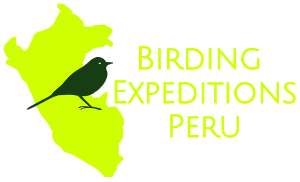Birding Southern Peru & Manu Nacional Park
24 Days & 23 Nights
Birding Southern Peru Manu
Birding Southern Peru Manu
Southern Peru is an excellent area for birdwatching, because of the variety of landscapes, environments, and altitudes.
This tour is perfect for birders because grants excellent opportunities to see many endemic bird species in small, restricted areas and to witness Peru’s stunning and versatile landscapes: desert, high Andes mountains, dry valleys, Polylepis forests, lagoons and lakes, Elfin and Cloud Forest, and the vast Amazon. Truly a dream tour thanks to Peru’s many beautiful routes and diverse birds.
We will travel across from west to east, starting in the Lima region with many endemic species and other species adapted to the dry Andean valleys, such the Great Inca Finch, Black-necked Woodpecker, and the Thick-billed Miner. We will wind our way up the high Andes mountains, where we can see more endemics in the Puna area and the Polylepis forests, like the Striated Earthcreeper, White-checked Cotinga, Dark-winged Miner, Junin Grebe, Junin Rail, Junin Canastero, among other rare species, like the beautiful Diademed Sandpiper-Plover and the White-bellied Cinclodes.
After crossing the mighty mountains, we will start our descend and spend a big part of the tour in the Cloud Forest to look for some rare and Manu amazon bird species.
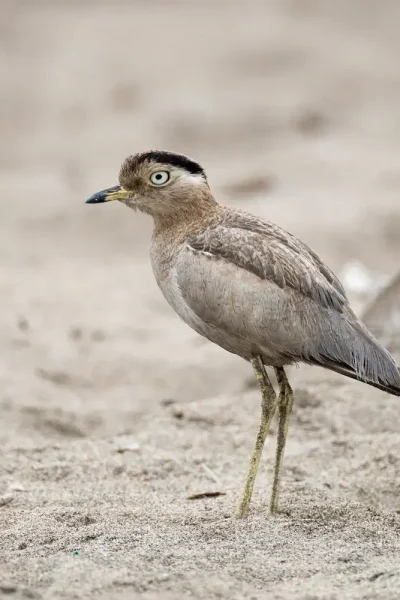
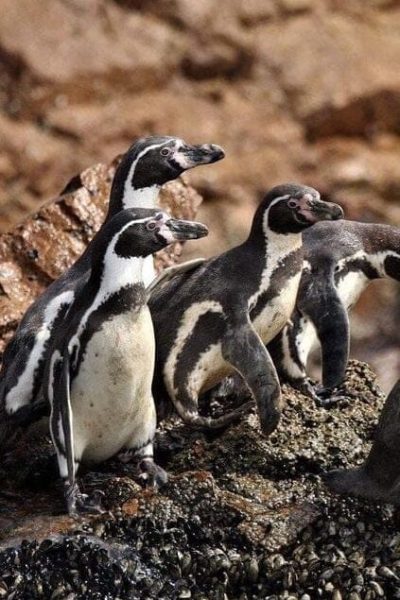

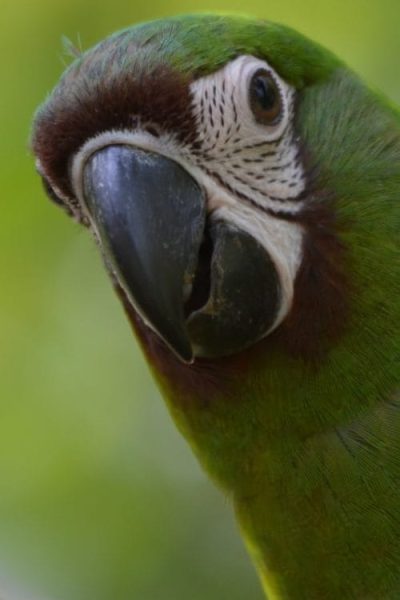
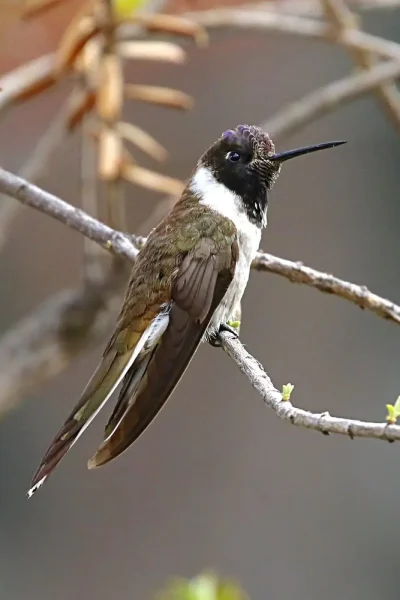
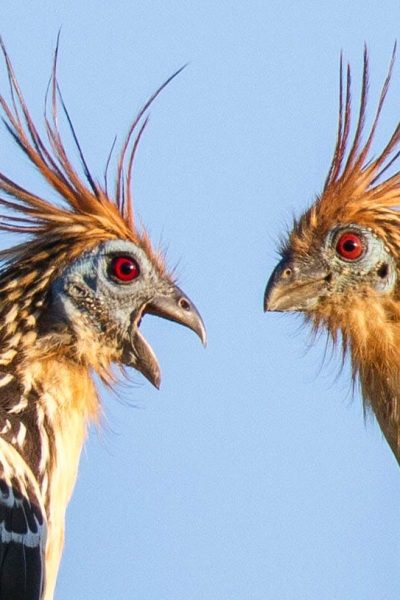
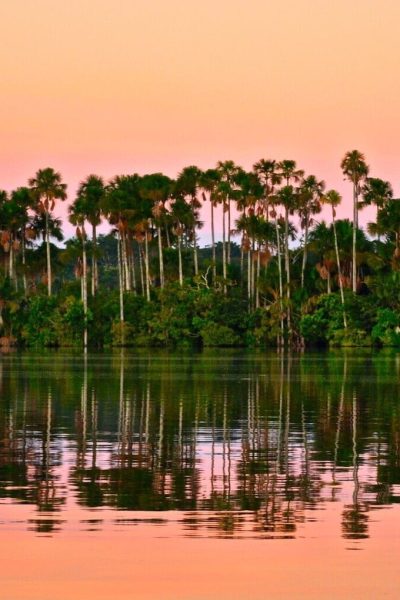
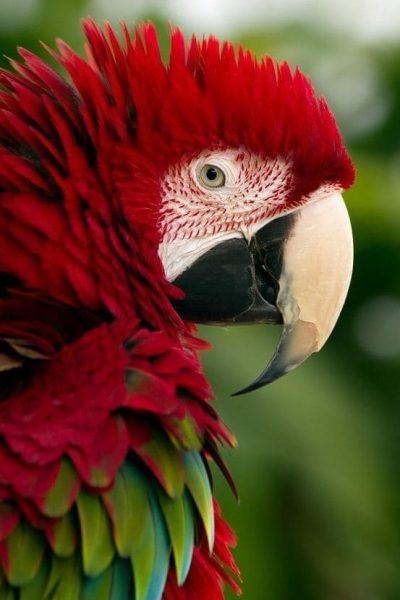
Birding Southern Peru Manu
Itinerary:
Day 1: Arrival at the international airport in Lima, Peru
This day we will pick you up at International Jorge Chavez Airport, your guide and driver will be waiting you to bring you to your hotel, which is located in Miraflores, to take a free day to be ready for the next day.
Night in Lima.
Day 2: Transfer to Santa Eulalia, fullday birding in the dry Andean valleys
Today we will transfer you to the spectacular scenery of Santa Eulalia Valley, this area provides an appropriate backdrop for tracking down a number of rare endemic birds. Our main targets are the extremely localized Rufous-breasted Warbling-Finch and Great Inca-Finch; while looking for them we’re likely to encounter other goodies like Bronze-tailed Comet, Black Metaltail, and Rusty-crowned Tit-Spinetail, Black-necked Woodpecker, Rusty-bellied Brush-Finch – all Peruvian endemics. More common species we may encounter through the day include Canyon Canastero, Giant Hummingbird, Peruvian Sheartail, White-capped Dipper, White-winged Cinclodes, Andean Swift, Torrent Duck, White-tipped Dove, Sparkling Violetear, Peruvian Sheartail, Purple-collared Woodstar, Pied-crested Tit-Tyrant, White-browed Chat-Tyrant, White-capped Dipper, Chiguanco Thrush, Cinereous Conebill, Blue-capped Tanager, Blue-and-Yellow Tanager, Mourning Sierra-Finch, Band-tailed Seedeater, Golden-bellied Grosbeak, Scrub Blackbird and Andean tinamou sometimes cross the road, around midmorning Andean Condor can impress us flying by in front of our eyes.
Night in Santa Eulalia.
Birding Southern Peru Manu
Day 3: Full day birding around the upper part of Santa Eulalia Valley
This day you will have the most exciting birding full day, despite a relatively low total species count due to the high elevation – almost every bird we’ll see is a specialty! We’ll start by scouring a patch of Polylepis forest for the rare White-cheeked Cotinga. Other birds here include Stripe-headed Antpitta and Striated Earthcreeper. Giant Conebill, We’ll then move up to the Milloc Valley, ticking off puna birds on the way: Black Siskin and Bright-rumped Yellow-Finch are common, while we’ll concentrate on finding Black-breasted Hillstar and a variety of canasteros (including the endemic Junin Canastero) and ground-tyrants (including the rare migrant Black-fronted Ground-Tyrant).
In the afternoon we’ll bird the famous Marcapomacocha area where we will hope for a plethora of special birds, including the enigmatic Diademed Sandpiper-Plover, the stunning White-bellied Cinclodes, and the incongruous Olivaceous Thornbill. Additionally we can get streak-Throated Canastero, Common Miner, Slender-billed Miner, white-winged Diuca-Finch, Gray-Breasted Seedsnipe, and with luck rarities like Puna Tinamou, Rufous-Bellied Seedsnipe and Dark-Winged Miner, We’ll return to paved roads in the late afternoon, after a tiring but very rewarding day of birding and bumping along dirt roads, we drive to La Oroya to spend a night.
Night in La Oroya.
Day 4: Birding in Junin Lake
This morning we’ll do our trip to Junin Lake to find the Critically Endangered Junin Grebe We are going to take a small motor boat out into the deeper parts of Lake Junin to ensure good views of this hard-to-identify bird. Our second main target is Junin Rail (Laterallus tuerosi), this species was recently described, known from a very small area of marshland around Junin lake, where habitat quality is declining There are many other interesting birds at Lake Junin, including Puna Plover and Andean avocet (seasonal), and a variety of waterfowl, Plumbeous Rail, Silvery Grebe, White-tufted Grebe, Cinnamon, Puna, Yellow-Billed Teals , Andean Negrito, Slate-colored and Giant Coot, Chilean Flamingos are sometimes present. We’ll drive back to Lima in the afternoon.
Night in Lima.
Day 5: Flight to Cusco and Birding the dry Intermontane Andean Valley
Early morning transfer to the airport, for our flight to Cusco, arriving here we cross the town, and drive to north west, along the way we stop in the first andean lake, Here we will look for some missing specie of high Andean wetland and some prey birds American Kestrel, Aplomado Falcon, Cinereous Harrier, Variable Hawk and Black-chested Buzzard-Eagle depending on the season, migrant boreal or austral shorebirds (waders) may be present.
We will continue our birding drive toward Limatambo area, dry intermontane valley with some localizes species: Pale-tailed Canastero, White-eared Puffbird, taczanowski’s Tinamou.
Night birding can give us some good rewards: Koepcke’s Screech-owl (Peruvian endemic) and rare and Local Buff-fronted Owl, next to Great-horned Owl.
Night in Mollepata.
Birding Southern Peru Manu
Day 6: Birding Mollepata Area Full day
Today we will spend most of the day in Mollepata valley a recently found birding spot,here are present Apurimac specialties and we are going to look for Apurimac endemic, before to find this place we will continue to the Abancay area, which is 5 hours driving from Cusco. just few people has the opportunity to visit this area, our targets are Apurimac Spinetail, Apurimac Brush-Finch, Pale-Tailed Canastero, Vilcabamba Tapaculo, chestnut-Breasted Mountain-Finch, Creamy-Crested Spinetail, White-Tufted sunbeam, Rusty-Fronted Canastero all of them endemic species, additionally we’ll get Black-Tailed Trainbearer, Mountain Velvetbreast, Red-Crested cotinga, Tit-Like Dacnis, Crimson-Mantled Woodpecker, in the afternoon we will be driven to Ollantaytambo where we have a birding garden, to find Bearded Mountaineer, Green and White Hummingbird (endemics).
Night in Ollantaytambo.
Day 7: Birding Abra Malaga, Humid Forest
The Abra Malaga is highly rich in endemic species, we’ll make an early departure today, driving over the pass, where we will see a complete different habitat: the upper cloud forest. Starting at a large patch of Chusquea bamboo We’ll hope to encounter especially some good mixed flocks which could contain Parodi’s Hemispingus(rare in the area), Unstreaked Tit-Tyrant, Cusco Brush-Finch, Marcapata Spinetail Inca wren (Peruvian endemic Birds) Puna Thistletail, White-browed Conebill, White-throated and White-banded and Tawny-rumped Tyrannulet, Three-stripe Hemispingus and Black-capped / white Browed Hemispingus, Plush-capped Finch (or Plushcap) and many others. Undulated and Rufous Antpittas are frequently heard calling but are very hard to see, as are Diademed and Trilling Tapaculos.
Hummingbirds to look for include Amethyst-throated Sunangel, Saphire-vented Puffleg, Scaled Metaltail and Sword-billed Hummingbird. the restricted-range Pale-footed Swallow, Chestnut-bellied Mountain-Tanager, Blue-Capped Tanager, Scarlet-Bellied Mountain-Tanager, and other Tanagers On the way back we look for Junin canastero Cream-Winged and White-winged Cinclodes, and some andean Species.
Night in Ollantaytambo.
Day 8: Birding Abra Malaga, Polylepis Forest
Today we begin ascending the Pass from where we hike up to the Polylepis forest to explore this unique habitat. The three best birds to be found here are Royal Cinclodes, Ash-breasted Tit-Tyrant and White-browed Tit-Spinetail. While these, especially the highly sought-after cinclodes, are sometime elusive, there are many other Possibilities include Line-fronted Canastero, Streak-Throated Canastero, Tawny Tit-Spinetail, Puna Tapaculo, Blue-mantled Thornbill and Giant Conebill. Stripe-headed Antpitta, Andean Flicker on the valley floor we’ll check a variety of Ground-tyrants, Sierra-Finchs and Seed Eaters In the afternoon we’ll drive to Cusco.
Regular to Good physical conditions are needed, and if you want to avoid this hike we can drop you at the train station a day before, so you can enjoy the amazing Machupicchu and in the evening we will transfer you to our confortable hotel in Cusco.
Night in Cusco.
Day 9: Morning birding in Huacarpay – Drive to Upper Manu
Today we will begin in the morning birding at Huacarpay Lake, looking for wetland species like Many-coloured Rush-Tyrant and Plumbeous Rail and searching the adjacent scrub for Rusty-fronted Canastero, Streak-fronted Thornbird and a variety of others. We’ll then make the drive through the dry Andes towards Manu, hoping to find three endemics en route: Chestnut-breasted Mountain-Finch, Bearded Mountaineer, and Creamy-crested Spinetail. In the afternoon we’ll have our first crack at the humid forest, hoping for treeline specialties like Golden-collared Tanager, Moustached Flowerpiercer, and – with lots of luck – the rare Scribble-tailed Canastero.”
Late in the day, we will have our first chance for one of the enigmatic and endemic red-and-white Antpitta.
We will spend the night in the humid montane forest, enjoying the stars with the opportunity to look for some nocturnal birds located in this area: Yungas Pygmy-Owl, Rufous-banded Owl, Swallow-tailed Nightjar.
Night in Wayquecha Lodge.
Birding Southern Peru Manu
Day 10: Birding Middle Manu Road
After a morning around Wayqecha, looking for more high-elevation species like Grey-breasted Mountain-Toucan, Red-and-white Antpitta, Puna Thistletail, Marcapata Spinetail, Rufous-capped Thornbill, and many others, we’ll work our way down the Manu Road, birding the most productive areas. Possibilities are nearly endless, from relatively common specialties like Blue-banded Toucanet and Handsome Flycatcher to mega-rarities like Greater Scythebill and Andean Potoo. We should encounter some good flocks that could include a variety of tanagers as well as Versicolored Barbet, Striped Treehunter, Inca Flycatcher, and even Band-tailed Fruiteater if we’re lucky. In the not-so-rare but difficult category are Hazel-fronted Pygmy-Tyrant, Unadorned Flycatcher, and White-throated Antpitta… sound like enough to keep us busy for the day?.
We will spend the night in cloud forest in more temperate environment at 1400 meters of height less than the previous night (4593,176 ft,) in the ideal habitat for the Cock of the rock.
Night in Cock of the Rock Lodge.
Day 11 – 12: Manu Cloud Forest
We’ll have 2 full days around Cock-of-the-Rock Lodge – this is tanager paradise! Depending what birds we need, we’ll visit elevations from 800 m. – up to 2500 m.( 2624,67 ft. – 8202,1 ft.). We can expect at least a couple great mixed flocks during our stay which could include Golden-eared (uncommon), Golden-naped, Black-goggled, Orange-Eared, Fawn-breasted, Yellow-throated, Spotted, Paradise, Golden, Bay-headed, and Black-goggled Tanagers, Golden-olive Woodpecker, Olive-backed Woodcreeper, Montane Foliage-gleaner, Grey-mantled Wren,
Streak-necked, Slaty-capped and Lemon-browed Flycatchers, the restricted-range Bolivian Tyrannulet, Marble-faced Bristle-Tyrant, Tropical Parula, Russet-crowned and Three-striped Warblers, Slate-throated Whitestart, Golden-eyed (or Deep-blue) and Bluish Flower-piercers, Blue-naped Chlorophonia, the restricted-range Slaty Tanager, Yellow-throated and Common Bush-Tanagers, Black-faced (or Dark-faced) Brush-Finch (split from Rufous-naped). There is even an undescribed tanager species known from this location ( “Bamboo Tanager” – “San Pedro Tanager” ), although it appears to be very rare, Yellow-rumped and Yellow-breasted Antwren, Ash-browed Spinetail, and many, many more.
Aside from flocks we’ll search for Crested and Golden-Headed Quetzal, Andean and White-eared Solitaires, Amazonian Umbrellabird, and Solitary and Black-and-chestnut Eagles, rare and Difficult to detect Black-Streaked Puffbird.
The lodge gardens are visited by Many-spotted Hummingbird, Violet-fronted Brilliant, Booted Racket-Tail, and others, sometimes including Wire-crested Thorntail and the rare Buff-Tailed Sicklebill and of course Andean Cock-of-the-Rocks are frequently seen in the area – if all else fails, we can visit a lek!
Behind the garden there is a trail system where we can look for Chestnut-breasted Wren, Scaled Antpitta, Rufous-breasted and Short-tailed Antthrush’s, Slaty Gnateater and the endemic Cerulean-capped Manakin (very rare). Night birding is usually slow, but we should see Lyre-tailed Nightjar, Band-Bellied Owl and Rufescent Screech-Owl is also a possibility.
Night in Cock-of-the-Rock Lodge.
Day 13: Birding Lower Manu Road
This day we’ll be focused on the lower part of the Manu Road where we’ll try for some very difficult endemics: Black-backed Tody-Flycatcher, Cerulean-capped Manakin, Peruvian Piedtail, and even an beautiful but undescribed tanager species known from this location ( “Bamboo Tanager” – “San Pedro Tanager” ), although it appears to be very rare, species of tanager are possible – feeling lucky? There are lots of others to hope for too, including Lanceolated Monklet, Two-banded Warbler, Chestnut-backed Antshrike, Stripe-chested Antwren, Versicolored Barbet, Golden-collared Honeycreeper, Fulvous-breasted Flatbill, Cinnamon-faced Tyrannulet, Ornate and Lemon-browed Flycatcher, Cabanis’s Spinetail.and many more birds Around mid-day we’ll have a quick look for some open country birds.
We’ll arrive in the afternoon for a short walk around Villa Carmen lodge (biological station recently working in tourism 500m – 1640,42ft ), this area will provide different selection of trails with special habitats in the southeast of South America “Bambo” where many specialties are restricted to this type of habitat and make bird watching so special around Manu National Park.
we have a night birding with some great night birds: Stripe, Black-banded and Spectacled Owl are some goodies that we can get, including Tawny-Bellied Screech-Owl (Garden guy).
Night in Villa Carmen Lodge
Day 14: Birding Amazon Foothill
The bamboo forest offers a great selection of birds restricted to this habitat so we will be birding full morning looking for all possible specialties.
Some of our bamboo targets are the wonderful White-cheeked Tody-Flycatcher, Manu, Striated, Goeldi’s, and White-lined Antbirds, Ihering’s Antwren, Bamboo Antshrike, Large-headed and Dusky-tailed Flatbills, Flammulated Tody-Tyrant, Rufous-capped Nunlet, and Brown-rumped and Dusky-cheeked Foliage-gleaners, Red-billed Scythebill, Dot-winged Antwren, Ornate Antwren and Rufous-breasted Piculet If we’re very lucky, we may also get Rufous-headed Woodpecker and Peruvian Recurvebill, but these are usually difficult and rare species, Fine-barred Piculet is one of the local endemic specie found in the area usually around the lodge, Including lowland hummingbirds as well as we can find some mammals – Monkeys, after lunch we leave the lodge, we have some birding on the way Yellow-billed Nunbird and Plain softail are our target before taking a short boat ride to Amazonia Lodge 10 minutes down stream from Atalaya Port.
Scanning from the boat we’ll catch Fasciated Tiger-heron, Garden is wonderful, where we could find Rufous-crested Coquette, Gould’s Jewelfront, and Sapphire-spangled Emerald, Violet-headed Hummingbird, Blue-tailed Emerald, Koepcke’s Hermit (endemic species) rare visitor among a variety of other hummingbirds. A short afternoon walk will get us our first Hoatzin for the trip, Amazonian Antpitta, Black-capped & Cinereous Tinamou, Blue-throated Piping-Guan, Fiery-capped, Band-tailed and Round-tailed Manakins, Bluish fronted Jacamar, Chestnut-capped Puffbird, Spot-backed Antbird, and rare and local threatened Razor-billed Curassow are possible. In the evening, we have a good chance of seeing Tawny-bellied Screech-Owl, but the local Black-banded Owl – though we usually hear it – is much more difficult!
Night in Amazonia Lodge..
Day 15: Birding Lowlands rainforest
We’ll spend most of the day at Amazonia Lodge, first heading into the hill forest for the most difficult forest birding of the trip. Rewards are there to be found though; flocks typically include Half-collared Gnatwren, Spectacled Bristle-Tyrant, Carmiol’s Tanager, Cuzco Warbler, Yellow-browed Tody-flycatcher, and Rufous-tailed Antwren; with lots of luck we may also find Foothill Antwren, Brownish-headed Antbird or even Sapphire Quail-Dove or Grey Tinamou – now it’s really getting tough!
We’ll also visit a White-browed Hermit lek, while other possibilities include Black and Spot-backed Antbirds, Ringed Antpipit, and Round-tailed Manakin. After a mid-morning walk we scan around the lodge (check for soaring raptors and swifts!), we’ll try the floodplain forest for Slender-billed Xenops, Fine-barred Piculet, Black-faced Antthrush, Amazonian Antpitta, Dark-breasted Spinetail,Speckled Spinetail Red-billed Tyrannulet, Black-banded Woodcreeper after lunch we’ll catch a boat down the river for 2 hours about, We’ll start our river bird list too; we should find Fasciated Tiger-Herons among the more common species, depending of the season, Boreal and Austral migrants are present (waders), as well as some different raptors. We’ll have time for an afternoon walk at Pantiacolla; most likely we’ll head for the river edge forest to look for the beautiful Scarlet-hooded Barbet among others. Later we’ll wait on the beach for dusk to fall, watching various parrots and macaws flying over and then hoping for Sand-coloured Nighthawks and Ladder-tailed Nightjar.
Night in Pantiacolla Lodge.
Day 16: Birding Pantiacolla Lodge
Pantiacolla Lodge has some of the best bamboo birding in the area; this will be the main focus of this day, though we will explore other habitats too. Some of our bamboo targets are the wonderful White-cheeked Tody-Flycatcher, Manu, Striated, Goeldi’s, and White-lined Antbirds, Ihering’s Antwren, Bamboo Antshrike, Large-headed and Dusky-tailed Flatbills, Rufous-capped Nunlet, and Brown-rumped and Dusky-cheeked Foliage-gleaners. If we’re very lucky, we may also get Rufous-headed Woodpecker and Peruvian Recurvebill, but these are usually difficult. Outside the bamboo we can expect good activity too; we may add Rusty-belted Tapaculo, Red-necked Woodpecker, and Striolated Puffbird, Golden-collared Toucanet, Great Jacamar to our list. And of course this is an amazing place for antbirds – we should build up a good list.
Pantiacolla usually produces some really great rarity too, but it’s dangerous to predict what it will be – on past tours we’ve sometimes found Long-tailed Potoo, Striated Antthrush, Banded Antbird, or Amazonian Scrub-Flycatcher. Who knows what we might turn up!
Besides our main target birdwatching we have a great forest with lots of wildlife: monkeys 6 types at least, white-lipped Peccary Jaguar and many other surprises, around Pantiacolla Lodge there is small Macaw clay lick, here is the unique chance to see the endangered Blue-Headed Macaw and some others.
Night in Pantiacolla Lodge.
Day 17: Birding Expedition to the Manu National Park
We will spend the best hours in the bamboo forest looking our targets species. then we will take a boat toward Manu National Park, Most of the birding tours don’t visit this area, we’ll visit Casa matsiguenka, this lodge is managed by local community all the staff are coming from Tayacome & Yomibato Matsiguenka community.
Manu National park has incredible biodiversity in the world, this place can offer to show us innumerable quantity of birds and mammals, even with the really small chance, here we have the best opportunity to see the wildlife like the mythical tropical rainforest predator “Jaguar”, Black and White Caimans, and several species of monkeys.
Enjoying Nature, wildlife and bird photography you have the best chance from the boat, along the river, we can see Orinoco Goose, Sand-colour Nighthawk, Horned Screamer, Wood Stork, Jabiru, with good luck Razor-Billed Curassow, some common birds along the river bank are Black scrimmer, Yellow-billed and Large-billed Terns, Pied Lapwing, Collared Plover, Cocoi and Capped Heron, Amazon, Green and Ringed Kingfisher, some raptors flying over are possible including the mystery rare Harpy Eagle.
Night in Casa Matsiguenka.
Birding Manu
Day 18: Manu National Park & Cocha Salvador
This day our main target is Black-Faced Cotinga, recently described species, today we are going to Visit the Salvador lake we use a Catamaran from where we can get a variety of great birds , Amazonian Streaked-Antwren, Silvered and Band-Tailed Antbird, Long-Billed Woodcreeper, Green Ibis, Limpkin, Grey-Necked Wood-Rail, Sungrebe, Least Grebe, Macaws flying by,
Some mammals are present in the area Black-Spider, Red- Howler, Brown-Capuchin Monkeys and many more.
A big reward for mammals lover are a family of endangered Giant otters, they are part of the fabulous wildlife of the area, in the trails we can get our first lowland understory flock, some other goodies are black-Faced and Rufous-Capped Antthrush, Rusty-belted Tapaculo, Undulated Tinamou, Ringed Antpipit, and Pale-Winged Trumpeter.
Night: Casa Matsiguenka.
Day 19: Manu Wildlife Center
Today before to leave Casa Matsiguenka we are to look for some of our missing target species, we’ll sail down stream, we have a second chance for the big predator Jaguar, in the afternoon we’ll explore the trail system and the canopy tower in manu Wildlife center depending of the time we can visit the Tapir clay lick where we can see some special birds like Rock Parakeet, Rose-Fronted Parakeet and ofcourse one of the biggest mammals of the tropical rainforest Brazilian Tapir in the evening we have chance for Silky-tailed Nightjar, Ocellated Poorwill, Crested-Owl.
Night in Manu Wildlife Center.
Day 20-21: Birding Manu Wildlife Center, Lowland Forest
We will have two busy days at and around Manu Wildlife Center / Amazon Manu Lodge. The terra firme forest here is excellent, with seemingly endless diversity; some targets include Rufous-capped Antthrush, Semicollared Puffbird, Banded Antbird, Ash-throated Gnateater,Ochre-bellied Flycatcher, White-bellied Tody-tyrant, Royal Flycatcher, Musician Wren and Pavonine Quetzal in addition to a great variety of foliage-gleaners and of course antbirds and flycatchers.
The canopy tower is excellent, this can include Chestnut-shouldered and Sclater’s Antwren, Lemon-chested Greenlet, Black-capped Becard, Rufous-tailed Xenops, Grey Elaenia, Lineated Woodcreeper, and of course lots of others. Most of the time the flock is not nearby, so we’ll also watch for Spangled Cotinga, White-throated and Channel-billed Toucans, Ivory-billed and Curl-crested Aracaris, Plumbeous Kite, the noisy Red-throated Caracara, Bat Falcon, Sungrebe, Grey-necked Wood-Rail, , Black-tailed, Blue-crowned, Amazonian and
Collared Trogons, and raptors. The ultimate prize here is Red-billed Pied Tanager, which although not common, is a good possibility. An oxbow lake within walking distance of the lodge gives us a chance for Black-billed Seed-Finch and Pale-eyed Blackbird, while White-chinned Sapphire and Sunbittern are the most popular garden birds. First day we’ll be concentrated in the trail system, The second day trip is a relaxing a productive afternoon at an oxbow lake; birding from a catamaran we’ll search for Black-collared Hawk, Sungrebe, Purus Jacamar, Green-and-rufous Kingfisher, Muscovy Duck, and of course the impressive Horned Screamer. This is also another good chance for the rare Giant Otter.
Night in Manu Wildlife Center.
Day 22: Manu Wildlife Center to Tambopata
On our final morning at Manu Wildlife Center, we may try to pin down some stubborn missing species, or visit a nearby trail where the rare Rufous-fronted Antthrush occurs; it can be hard to see, of course! We’ll then travel downstream by boat, we will take a boat down stream for 2 hours about (depending water level) until Boca colorado village, here you will say goodbye our boat crew members, in Boca Colorado we will take ground transport (Taxi) for one hour about, to get Puerto Carlos in this place we are going to take another boat just cross the Inambari River for 10 – 15 minutes.
From here we will take another ground transport to Chuncho Lodge, if time allows we may make some birding stops and short walk around the lodge.
Night in Tambopata Lodge.
Day 23: Biggest Macaws Claylick
Early in the morning we sail upstream on Tambopata river, after 1.5 hours about boat ride we get the biggest Macaw clay lick in the world, where you can see the three big ARAS together, eating the clay Red-and-Green, Blue-and-Yellow, and Scarlet Macaw and of course some other nice birds, along the river we have another chance for the enigmatic jaguar and some other wildlife: Capybara biggest rodent, monkeys and more.
Late in the day we enjoy the trails looking for some missing species of the lowlands.
Night in Tambopata Lodge.
Day 24: Return to the city, flight back to Lima
Today we leave the lodge after breakfast, there are various flight alternatives for leaving Puerto Maldonado; we usually go for a mid-day option to allow for a morning of birding. This can be productive, especially for the localized White-throated Jacamar; other possibilities include Green Ibis, Southern Caracara, Red-breasted Blackbird, Brazilian Teal, Purus Jacamar, Dull-capped Attila and a variety of other open country birds including seedeaters and raptors. The tour will conclude with our flight back to Lima (or Cusco).” or you can connect one of our bird tour extensión see our itineraries.
Birding Tours Southern Peru
Details
Group size:
from 2 to 8 people.
Individual price:
$5,520 USD
Group price:
$4,500 USD per person
Upcoming trips:
15 Apr – 08 May, 2024
Departures:
Available all year.
The tour includes:
- Private transport
- Bird specialist guide
- Accommodation in comfortable hotels & Lodges
- All meals, full board
- Mineral water, fresh fruit, snacks
- Pick-up from airport & transfer to hotel
- Entrances fees to national and private reserves
- Internal flights as mentioned in the itinerary
- Gratuities (optional)
- Private transport
- Bird specialist guide
- Accommodation in comfortable hotels & Lodges
- All meals, full board
- Mineral water, fresh fruit, snacks
- Pick-up from airport & transfer to hotel
- Entrances fees to national and private reserves
- Internal flights as mentioned in the itinerary
- Gratuities (optional)
The best birding tours you will ever find !

Best Tour in Manu
WE’VE GOT YOU COVERED!
Lorem ipsum dolor sit amet, consectetur adipiscing elit. Ut elit tellus, luctus nec ullamcorper mattis, pulvinar dapibus leo.

specialist guides
Lorem ipsum dolor sit amet, consectetur adipiscing elit.

PICKUP from airport or hotel
Lorem ipsum dolor sit amet, consectetur adipiscing elit.

best manu lodges
Lorem ipsum dolor sit amet, consectetur adipiscing elit.

full board meals
Lorem ipsum dolor sit amet, consectetur adipiscing elit.
